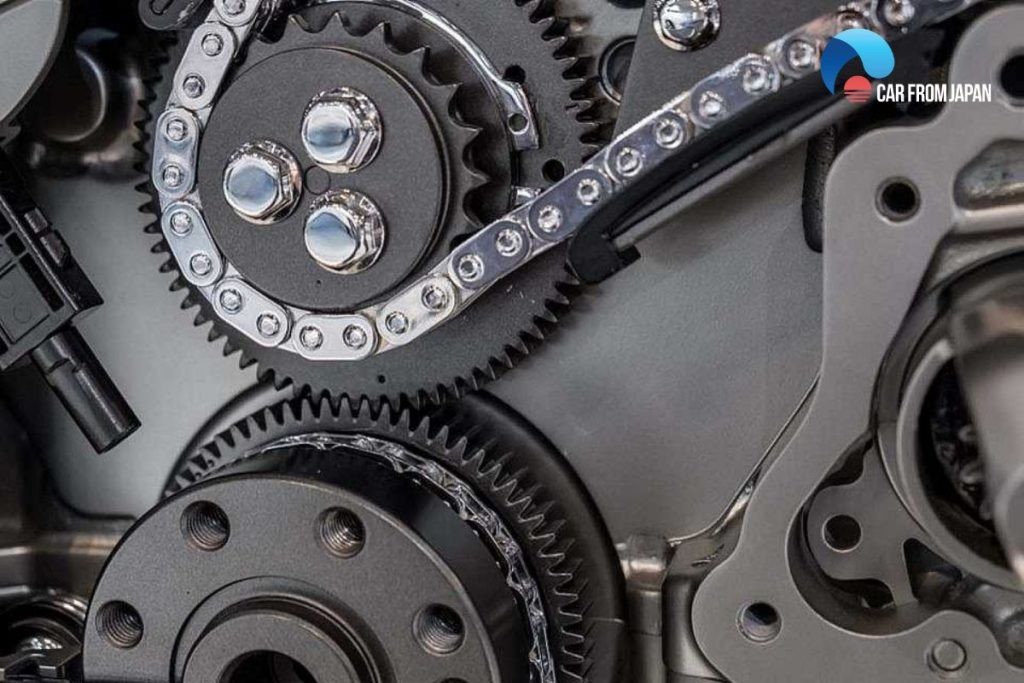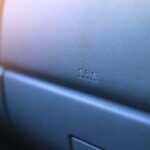Experiencing your car suddenly shut off while you’re driving can be a terrifying and dangerous situation. Understanding the potential reasons behind this issue is crucial for every driver. This article, crafted by automotive experts at obd-de.com, will delve into the most common reasons why your car might unexpectedly shut off while driving, offering insights into how to diagnose and address these problems to ensure your safety on the road.
1. Faulty Crankshaft Position Sensor
A frequent cause of a car shutting off unexpectedly is a failing crankshaft position sensor. This sensor plays a vital role in monitoring the engine’s internal operations, specifically tracking the movement of the crankshaft, pistons, and engine valves. By monitoring the crankshaft’s speed and position, it ensures the engine control unit (ECU) can precisely time fuel injection and ignition.
When a crankshaft position sensor begins to fail, it sends inaccurate data to the ECU regarding piston positioning. This misinformation can lead to engine misfires and, ultimately, cause the car to stall while driving.
Symptoms of a Faulty Crankshaft Position Sensor:
- Check Engine Light: A malfunctioning sensor often triggers the check engine light.
- Erratic Tachometer: The tachometer, displaying engine RPMs, might behave erratically, jumping or dropping inconsistently.
- Rough Engine Performance: You may notice the engine running roughly, misfiring, or struggling before stalling.
- Reduced Fuel Efficiency: Inaccurate sensor readings can negatively impact fuel consumption.
Diagnosis and Solution:
An OBD-II scanner can be invaluable in diagnosing a crankshaft position sensor issue. Error codes ranging from P0335 to P0338 often indicate a problem with this sensor. While the scanner helps narrow down the possibilities, professional diagnosis might be needed for precise identification and replacement of the sensor.
2. Failing Engine Control Unit (ECU)
The Engine Control Unit (ECU), essentially your car’s computer, manages and optimizes engine performance by processing data from numerous sensors. A faulty ECU can disrupt this delicate balance, leading to a car shutting off while driving.
A malfunctioning ECU can cause a range of issues, including sudden power loss, decreased fuel efficiency, and inconsistent spark delivery. These disruptions can result in random engine stalls and restarts. Jerking and stalling during driving, accompanied by the check engine light, are also common indicators of ECU problems.
Diagnosing an ECU Issue:
Troubleshooting an ECU is complex and often requires professional expertise. While an OBD-II scanner can provide diagnostic trouble codes, these may not definitively pinpoint an ECU failure. Mechanics possess specialized tools and software for thorough ECU diagnostics. If you suspect ECU problems, seeking professional automotive service is advisable.
3. Defective Alternator
The alternator is responsible for generating a continuous supply of electricity to power your car’s electrical components and recharge the battery while the engine is running. If the alternator fails, the electrical system becomes reliant solely on the battery.
Initially, a healthy battery might sustain the car’s electrical needs, allowing it to run for a short period even with a failing alternator. However, batteries are not designed for prolonged power supply to the entire vehicle. As the battery depletes, essential electrical systems will falter, leading to dashboard light flickering and eventually causing the car to shut off completely.
Identifying Alternator Problems:
Pay attention to warning signs like dimming headlights, a battery warning light, or unusual electrical issues. Regular DIY car maintenance, including testing the alternator and battery voltage with a multimeter every 4-6 months, can help identify potential alternator problems early on.
Testing Your Alternator:
- With the engine running, turn off all non-essential electrical loads (lights, radio, etc.).
- Use a multimeter to test the battery voltage.
- Increase engine speed to 2000 RPM and turn on all electrical accessories (headlights, radio, wipers, etc.).
- Test the alternator output voltage. A healthy alternator should read between 13.1V and 14.6V. Readings below 13.0V suggest a potential alternator issue requiring professional inspection.
4. Empty Fuel Tank Due to Faulty Fuel Gauge
It might seem obvious, but running out of fuel is a surprisingly common reason for a car to stop while driving. Sometimes, however, the issue isn’t forgetfulness but a malfunctioning fuel gauge providing inaccurate readings.
A common cause of fuel gauge inaccuracy is a failing fuel sending unit. This component measures the fuel level in the tank and relays the information to the fuel gauge. When it malfunctions, the gauge can become stuck, often indicating a full or empty tank regardless of the actual fuel level.
Suspecting a Fuel Gauge Issue?
If you suspect your fuel gauge is unreliable, and your car shuts off unexpectedly, a simple test is to add a gallon or two of gasoline to the tank. If the car restarts, it confirms fuel starvation and indicates a potential fuel gauge or sending unit problem.
5. Clogged or Failing Fuel Pump or Fuel System
A consistent and adequate fuel supply is essential for engine operation. The fuel pump is responsible for delivering fuel from the tank to the engine at the correct pressure and volume. A failing fuel pump or a clogged fuel filter can disrupt this supply, causing the engine to shut off while driving, often mimicking the symptoms of running out of gas.
A failing fuel pump might cause intermittent fuel delivery, leading to the car stalling and potentially restarting after a short period. A clogged fuel filter restricts fuel flow, starving the engine of fuel and causing it to stall.
Troubleshooting Fuel Delivery Issues:
- Fuel Pump Check: In some cases, a temporary workaround (though not a fix) to check for fuel pump issues is to gently kick the fuel tank (plastic tanks only, avoid metal tools). If the car restarts after this, it could indicate a fuel pump problem, although this is not a reliable diagnostic method.
- Fuel Filter: A clogged fuel filter is a common issue, especially in older vehicles or those with infrequent maintenance. Fuel filters should be replaced at recommended intervals. Metal fuel filters can sometimes be cleaned, while paper or nylon filters must be replaced.
6. Defective Ignition Switch
The ignition switch, located behind the ignition lock, is activated when you turn the car key. This switch controls the electrical circuits necessary to start and run the car. Over time, the internal metal plates within the ignition switch can corrode or wear out.
Corrosion or wear can lead to a loss of electrical connection within the ignition switch, abruptly cutting power to the engine and causing it to shut off while driving. A failing ignition relay, which regulates electrical flow through the ignition system, can also produce similar symptoms.
Diagnosing Ignition Switch Problems:
A quick way to check for a faulty ignition switch is to observe the dashboard lights when the car shuts off. If the dashboard is completely dark, it suggests a potential ignition switch failure. Attempting to restart the car immediately after stalling can also provide clues. If the engine doesn’t crank or start, an ignition switch issue is more likely.
7. Broken Spark Plugs
Spark plugs are critical components of the ignition system, generating the spark needed to ignite the air-fuel mixture in the engine cylinders. While a single faulty spark plug might not prevent the car from running, multiple failing spark plugs can lead to significant engine problems.
When several spark plugs malfunction, the engine can experience misfires, reduced power, and ultimately stall while driving. Before complete engine shut-off, you might notice warning signs such as decreased engine performance, poor acceleration, engine misfires, or unusual engine noises like knocking.
Inspecting Spark Plugs:
If you suspect spark plug issues, inspecting them is a straightforward process. Examine the spark plugs for signs of damage, such as blistering (indicating overheating) or fouling (deposits of oil, fuel, or carbon). A healthy spark plug will have a clean, intact electrode.
What To Do When Your Car Shuts Off While Driving: Safety Steps
A car stalling unexpectedly can be dangerous, particularly at high speeds or in heavy traffic. Prioritizing safety is paramount.
Immediate Actions:
- Stay Calm and Steer to Safety: Avoid panicking. Focus on safely guiding your car to the side of the road, away from traffic flow.
- Pull Over and Stop: Maneuver your vehicle to a safe location, ideally on the shoulder or emergency lane. Engage the emergency brake to secure the car. Remember that power steering and braking might be reduced or absent when the engine is off.
- Attempt Restart: Once safely stopped, try restarting your car. If successful, you might be able to drive to a nearby repair shop, but proceed with caution and be aware the issue could recur.
If Restarting Fails:
- Activate Hazard Lights: Turn on your hazard lights immediately to alert other drivers to your stopped vehicle, especially in low visibility conditions.
- Call for Assistance: Contact roadside assistance, your emergency contact, or local emergency services. Provide your location and vehicle details. Services like AAA offer 24/7 assistance. Police can also assist in contacting roadside services if needed.
- Use OBD-II Scanner (If Available): If you have an OBD-II scanner, use it to check for diagnostic trouble codes. Note down any codes for later diagnosis by a mechanic.
Conclusion
A car shutting off while driving is a serious issue with various potential causes, ranging from sensor malfunctions to fuel delivery problems and electrical faults. Understanding these common culprits and knowing how to react in such situations is essential for driver safety.
While this article provides insights into potential causes, diagnosing and repairing these issues often requires professional automotive expertise. Regular car maintenance, as recommended by your vehicle manufacturer, is crucial in preventing many of these problems and ensuring reliable vehicle operation. If your car has shut off while driving, it’s highly recommended to have it thoroughly inspected by a qualified mechanic to identify the root cause and implement the necessary repairs.

